President Trump sent the stock market on a rollercoaster ride after indicating that he was closer to firing Federal Reserve Chair Jerome Powell, before abruptly backtracking on the comment.
The decision to fire Powell, whose term runs until May 2026, was discussed in a meeting with congressional Republicans on Tuesday evening, the President confirmed.
However, he told press in the Oval Office on Wednesday that although he doesn’t ‘rule out anything’ it is ‘highly unlikely’ he’d fire Powell.
‘Unless he has to leave for fraud,’ Trump chimed in referencing $2.5 billion taxpayer-funded ‘lavish’ office renovations that Powell apparently signed off on for his D.C. office.
The President has grown increasingly frustrated with the Fed’s ‘wait and see’ approach to lowering interest rates and has pressured Powell to make cuts.
Firing Powell would likely cause a rout in financial markets who insist the independence of the Fed is critical for stability.
The White House insists that Trump has not yet made a final decision and could still change his mind.
The news of Powell’s possible termination sent the S&P 500 down 0.5 percent, but markets began to recover after Trump appeared to scale back the threat.
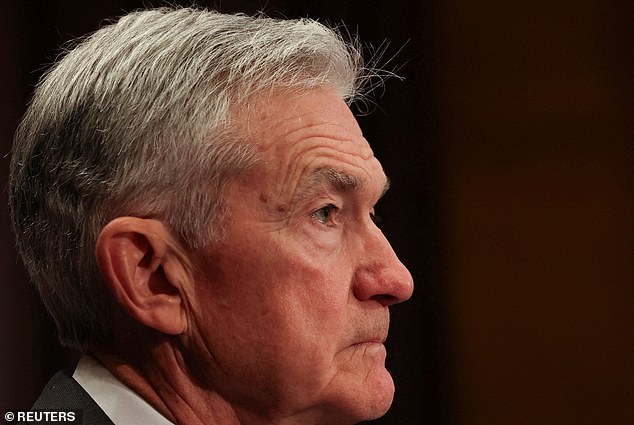
President Trump sent the stock market on a rollercoaster ride after indicating that he was closer to firing Federal Reserve Chair Jerome Powell
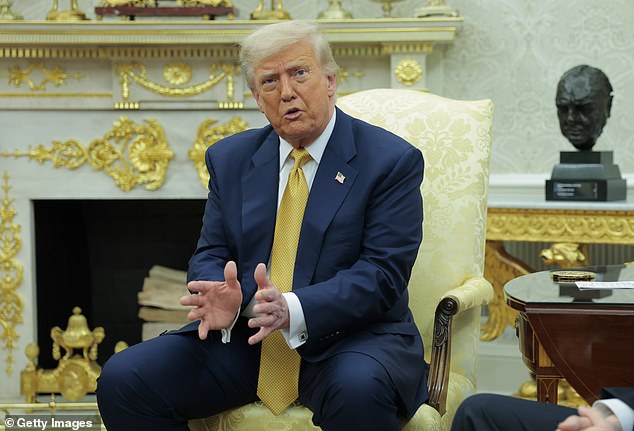
Trump told press in the Oval Office on Wednesday that although he doesn’t ‘rule out anything’ it is ‘highly unlikely’ he’d fire Powell
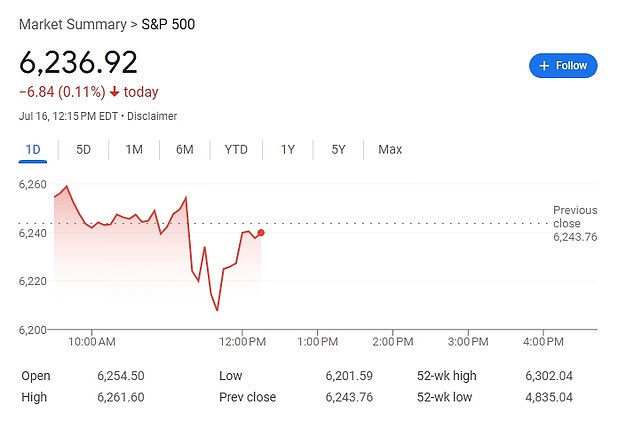
The news of Powell’s possible termination sent the S&P 500 down 0.5 percent, but markets began to recover after Trump appeared to scale back the threat
The S&P 500 was last down 0.1 percent, the Nasdaq was down 0.2 percent after briefly dropping as much as 0.8 percent.
The Dow Jones Industrial Average, meanwhile, remained flat after briefly dipping on the news.
Firing Powell would be a major test of the President’s legal authority over the central bank and other independent agencies.
Trump is currently conducting an ‘Apprentice-style’ competition to find Powell’s replacement.
Two Republicans are reportedly vying to take over the position.
Kevin Hassett, one of Trump’s closest economic advisers, is emerging as a serious contender, The Wall Street Journal reported.
Former Fed governor Kevin Warsh is also allegedly angling for the position.
Trump passed him over for the role eight years ago when he nominated Powell.
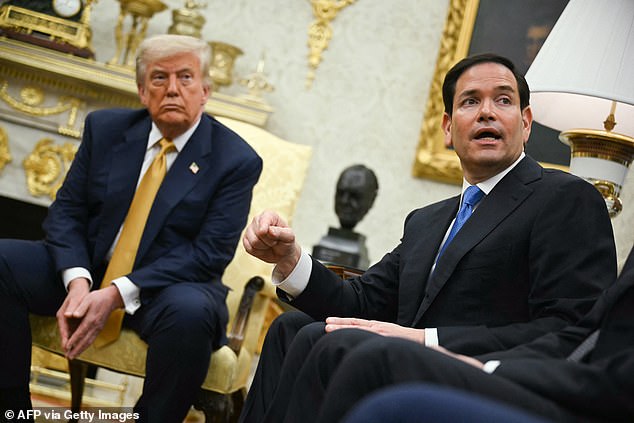
Trump and Secretary of State Marco Rubio speak to reporters in the Oval Office
During Trump’s first term, the pair clashed repeatedly, and the President even openly considered replacing Powell in 2018.
During his second term, the President has continued to threaten ousting the Fed chief.
If Trump turns on Powell again, experts warn the consequences could be catastrophic.
The Federal Reserve has operated independently from the White House for nearly a century.
Removing Powell would shatter that precedent and signal to the world that Trump is willing to ax a trusted voice on the economy just to get his way. This would in turn make investors feel that US debt and stocks were not trustworthy investments.
‘If President Trump were to somehow remove Fed Chair Powell before his term ends, it would create enormous concerns about the Fed’s independence, which is a critical component to US central banking,’ eToro analyst Bret Kenwell told DailyMail.com.
‘The Fed needs to stay independent, both literally and in the eyes of the public,’ Kenwell explained.
‘If the Fed loses its independence, it could call price stability into question and result in wavering trust of the US dollar and US debt.’
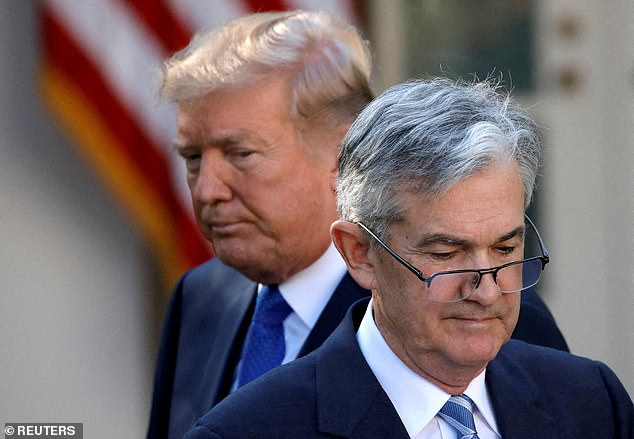
Firing Powell would be a major test of the President’s legal authority over the central bank and other independent agencies (Pictured in 2017)
The US dollar has already recorded its worst half-year slide in value in 50 years in 2025.
The dollar dropped more than 10 percent against major global currencies from January to June, according to the US Dollar Index.
Firing Powell would also overturn a Supreme Court decision from 1935 called Humphrey’s Executor, which has been used to protected officials at independent agencies.
It would be more than losing a sensible voice on the economy, but also overturning a 100-year-old precedent of the executive not firing independent officials without cause.
These agencies, including the Fed, have relied on the ruling to make decisions in the face of political opposition from the executive.
‘The mere empowerment of the president to exercise this ability to fire governors would unnerve market participants, would undermine Federal Reserve credibility in the eyes of investors,’ former Fed economist David Wilcox told the Financial Times earlier this year.
‘We might get a rather severe adverse market reaction to a Supreme Court decision along those lines,’ he explained.











